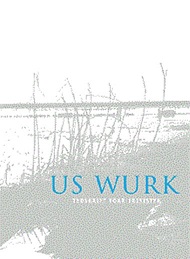The Old Frisian MASC.SG. form of the proximal demonstrative pronoun this
DOI:
https://doi.org/10.21827/uw.72.48-67Abstract
The ACC.SG.MASC. form of the Old Frisian proximal pronoun 'this', thissen, does not appear in the earliest Old Frisian texts. Ms. B2 contains five instances of thenne with a proximal meaning, alongside the form thene as form of the definite article in the same fragment. This rare form of the proximal pronoun, which resembles Old Norse þenna, is corroborated by 19th c. Wangerooge Frisian din 'this (MASC.)'. The form thenne is frequent in Old West Frisian in the Unia version of the Old Skelta-law, where it appears as an archaic equivalent to the article thine; the latter is the default in younger Unia texts. It is hypothesised that incipient, incidental weakening of the geminate realisation in unstressed pronouns in pre-Old West Frisian, together with the existence of analogical patterns in the ACC.SG.MASC. forms minne, thinne, sinne, enna/anne 'my, thy, his, one', provoked a merger of the proximal form thenne with the much more frequent article thene. Eventually, when geminates were lost in unstressed syllables in the early 14th c., thenne disappeared and thine – independently developed from older thene or (re)created by analogy with the anaphoric pronoun hine – became the sole form of the ACC.SG.MASC. article in late Old West Frisian. A new analogical form of the proximal pronoun thissen was created in the 14th c.

